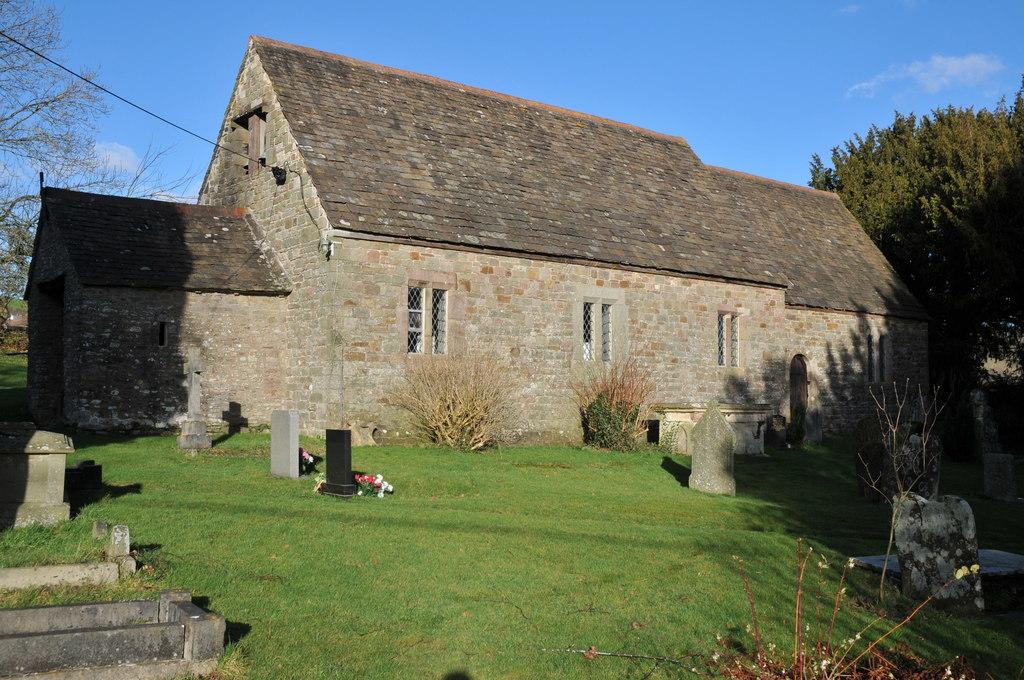All Saints
Llanfrechfa, Monmouthshire
Stands in an isolated position on a very ancient site.

A little country church with some surprising monuments, set in a 'Celtic' oval embanked churchyard.
Llandegfedd, Monmouthshire
This church was once called Merthyr Tegfedd, and there were all sorts of legends about the martyrdom of the beautiful St Tegfedd. The present building goes back to the 12th century, though a lot of it was rebuilt by the Victorians. But there has been a church here for much longer than that. The churchyard is oval, with a hedge and bank around it, a sure sign of a very early church, and it is mentioned in an eighth-century charter in the Book of Llan Daf.
So who was Tegfedd? Legends say she was a princess from north Wales, married a grandson of the great Cunedda Wledig and was the mother of another saint, Afan Buallt. So a typical Welsh saint, married, a mother, not a young maiden. She founded the church at Llandegfedd and was killed there by Saxon raiders.
But these are just stories. ‘Merthyr’ in a Welsh place name means not martyr but martyrium, a place where relics were kept. During the rebuilding, a recess was found in the north wall, and this may have been where Tegfedd was buried. So what we can say about her is that she was a person of exceptional holiness, that she probably founded the church, and that local people valued her memory and wanted to be near her relics.
The church still has its box pews and some endearing wall monuments with flowers and cherubs. Round the chancel arch is a nineteenth-century inscription recording gifts to the parish and its poor. Outside, hanging under the eaves, is the bier on which the dead of the parish were carried to their graves. This little church has so many memories of the community it served.
Llanfrechfa, Monmouthshire
Stands in an isolated position on a very ancient site.
Llangybi, Monmouthshire
Medieval wall paintings and a holy well.
Llantarnam, Monmouthshire
The medieval church with its fine Tudor tower and 16th century chancel arcade was probably built by monks for the local community.